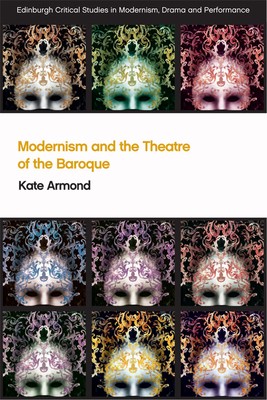
- We will send in 10–14 business days.
- Author: Kate Armond
- Publisher: Edinburgh University Press
- ISBN-10: 1474452442
- ISBN-13: 9781474452441
- Format: 15.2 x 22.6 x 1.3 cm, softcover
- Language: English
- SAVE -10% with code: EXTRA
Reviews
Description
First comparative study to address the rediscovery of baroque aesthetic in modernism
Did you know that seventeenth-century philosophy influenced dance theory and evolutionary science during the modernist period? Or that in England, Italy and Germany the term 'baroque' was used almost exclusively as an insult until the 1900s? Modernism and the Theatre of the Baroque fashions an independent aesthetic for modernist writers and texts that challenges many high modernist qualities promoted by James Joyce and T. S. Eliot. Providing a fresh interpretation of the works of Djuna Barnes, Wyndham Lewis, Edward Gordon Craig and Isadora Duncan, the book broadens our understanding of modernist priorities and demonstrates how readily these ideas translate across genres. It shows that modernists are not passive recipients of baroque stereotypes but are instead painstaking in their research and innovative in their reworking of original sources. This is an introduction to key ideas, characters and techniques that will allow the baroque to be used as a conceptual and historical framework for analysing modernist achievements, thereby opening up new opportunities for further research.
Key features
- Fashions an independent aesthetic for modernist writers and texts that challenges many high modernist qualities promoted by James Joyce and T. S. Eliot
- Provides new connections between philosophy/critical theory and modernist culture, links that are relevant to both popular and academic interest
- Introduces key ideas, characters and techniques that allow the baroque to be used as both a conceptual and historical framework for analysing modernist achievements, thereby opening up new opportunities for research, and demonstrating how readily these ideas translate across genre
EXTRA 10 % discount with code: EXTRA
The promotion ends in 11d.17:27:20
The discount code is valid when purchasing from 10 €. Discounts do not stack.
- Author: Kate Armond
- Publisher: Edinburgh University Press
- ISBN-10: 1474452442
- ISBN-13: 9781474452441
- Format: 15.2 x 22.6 x 1.3 cm, softcover
- Language: English English
First comparative study to address the rediscovery of baroque aesthetic in modernism
Did you know that seventeenth-century philosophy influenced dance theory and evolutionary science during the modernist period? Or that in England, Italy and Germany the term 'baroque' was used almost exclusively as an insult until the 1900s? Modernism and the Theatre of the Baroque fashions an independent aesthetic for modernist writers and texts that challenges many high modernist qualities promoted by James Joyce and T. S. Eliot. Providing a fresh interpretation of the works of Djuna Barnes, Wyndham Lewis, Edward Gordon Craig and Isadora Duncan, the book broadens our understanding of modernist priorities and demonstrates how readily these ideas translate across genres. It shows that modernists are not passive recipients of baroque stereotypes but are instead painstaking in their research and innovative in their reworking of original sources. This is an introduction to key ideas, characters and techniques that will allow the baroque to be used as a conceptual and historical framework for analysing modernist achievements, thereby opening up new opportunities for further research.
Key features
- Fashions an independent aesthetic for modernist writers and texts that challenges many high modernist qualities promoted by James Joyce and T. S. Eliot
- Provides new connections between philosophy/critical theory and modernist culture, links that are relevant to both popular and academic interest
- Introduces key ideas, characters and techniques that allow the baroque to be used as both a conceptual and historical framework for analysing modernist achievements, thereby opening up new opportunities for research, and demonstrating how readily these ideas translate across genre


Reviews